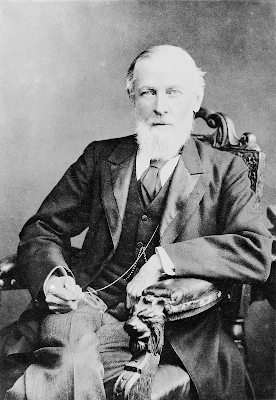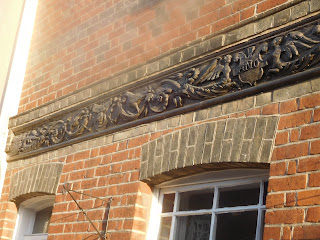Three Doctors
In previous censuses the GP living in East Street was Harold Giles, FRCS. In 1891, however, Thomas Simpson had replaced him, moving from 70, Church Street where he had lived and had his surgery for many years.
Local surgeons at the time were expected to deal with every kind of medical emergency: setting broken limbs, amputating lacerated hands and arms and attempting small-scale operations. That they were not always successful is perhaps not surprising.
Thomas Simpson was a leading figure in the community, chairing the Liberal Association, running Bible classes for young men and giving lectures at the Mechanics' Institute in church Street. He gave a series of talks on medical topics such as "Blood and the circulation", "Food and the digestive system" and so on. At other times he lectured on the life and work of John Bunyan, and the remains at Petra, talks enlivened with songs and musical interludes. Penny readings were held where prepared pieces were delivered for their entertainment value.
In 1872, Thomas Simpson took on a seventeen year old youth called William Edward Gowers as an apprentice. Gowers would go on to far outstrip Simpson in his medical career. The son of a shoe-maker who had died when he was only eleven, Gowers had left school at fifteen and returned to his mother who had moved to live in Doncaster. After a year spent trying out farming as a career, Gowers was sent to live with his grandmother in Coggeshall. It was suggested that he should be apprenticed to Thomas Simpson, the usual training for doctors at that time.
During the two years he spent in Coggeshall Gowers also prepared for the entry exams for University College London, chosen because he was a Non-Conformist. This was the equivalent of teaching himself A Levels. For this he had the support of the local minister and also the library of the Mechanics' Institute to draw on. He taught himself Pitman's Shorthand in order to be able to write a personal diary and keep on top of his studies. He realised that there were no symbols for medical terminology, a topic which was to become a lifelong interest for him.
While in Coggeshall, Gowers was invited to accompany Harold Giles, the GP in East Street, to some interesting cases, setting the broken leg of a child in Gas Lane, cauterising bleeding piles and preparing a surgical procedure for a man with a lump in a sensitive area. Although only seventeen, Gowers correctly diagnosed that this lump was not in fact a tumour but a hernia, thus sparing the patient the knife. Giles prescribed a truss.
Gowers was to go on to become the leading neurologist of his day. He received a knighthood for his work and his directory of neurological conditions became a standard work.


Comments
Post a Comment